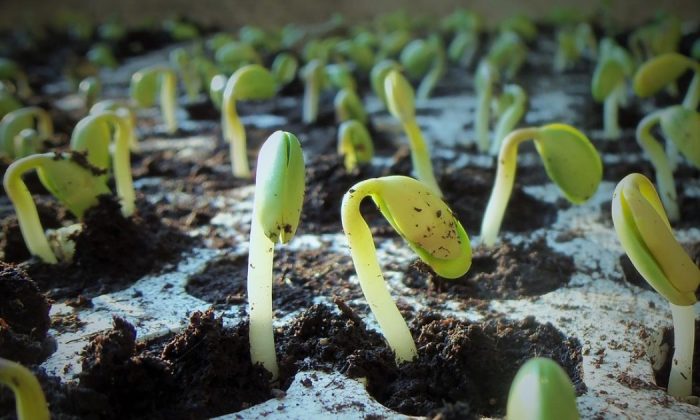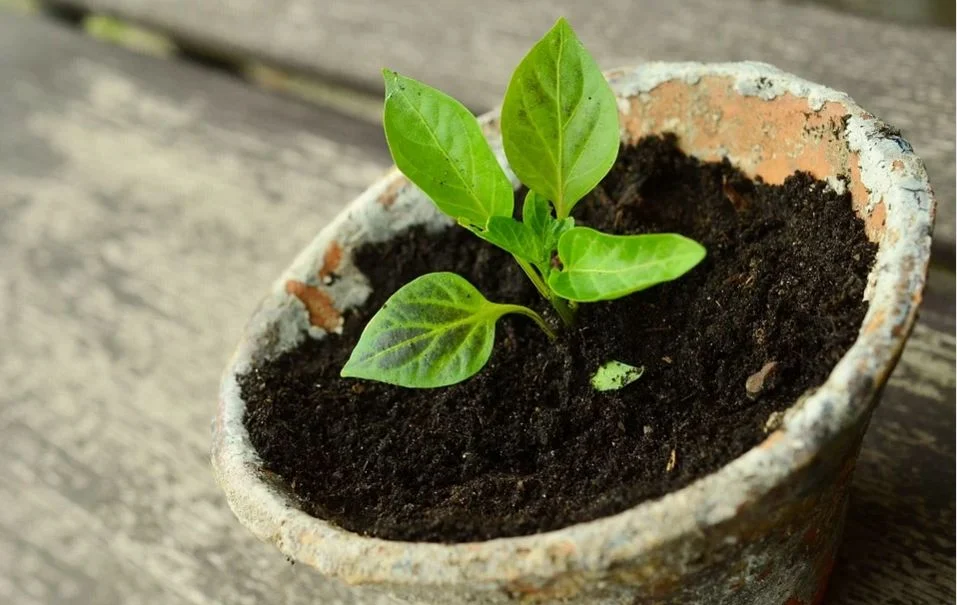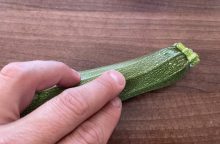Pre-growing vegetables in February

February is the month for warmth-loving vegetables. That is for pre-growing vegetables indoors not for actual planting outdoors of course. Seeds must be sown in time so they can germinate earlier and give you a chance to enjoy wonderful fruits sooner. We are talking, for example, about eggplants or peppers, greenhouse tomatoes and cucumbers. But you can also pre-grow various cruciferous vegetables in February, if you want to enjoy them earlier. Keep in mind that proper light, heat and humidity are important factors that affect the germination process.
Moisture, heat and light
Observing and maintaining these three basic conditions will help you to grow strong seedlings faster. Plant the seeds and let them grow at a room temperature in a moist substrate. A good idea is to cover seeds with some kind of cloth to maintain higher air humidity. When the seeds germinate you need to pay attention to proper lighting – place seedlings on a windowsill facing south or east, or use artificial light, best a source which provides a similar spectrum like sunlight
Peppers pre-growing
Because it will take about half a year from the actual sowing to harvestyou should sow pepper seeds as soon as possible, regardless what variety of peppers you have (sweet, hot, thick or goat’s horns), it is always better to soak the seeds for two to three days in a lukewarm water and if you use chamomile tea instead of water, you will kill two birds with one stone – you will speed up the germination and protect the plants against various diseases. Cover seeds with a thin layer of substrate and keep them at 25 °C (the temperature should not drop below 20 °C).
Tomato pre-growing
You can choose from many different tomatoes that are available on the market today. Tomatoes that you will be pre-growing are usually intended for a greenhouse. The best temperature for germination is around 25 °C and after that 15 to 20 °C is enough for seedlings that are fairly developed.
Cucumber pre-growing
Pre-grown cucumbers are also intended for the greenhouse and should be grown at a temperature of around 25 °C – that is if you aim for very early germination in the order of few days (for example, if the temperature is 15 °C, they will germinate within two weeks or so). After true leaves form, you can transplant your cucumbers into large pots and start fertilizing. At the end of March or beginning of April, you can transplant the seedlings into your greenhouse.
Photo: Pixabay
Pre-Growing woodland strawberries (Fragaria vesca)
If you pre-grow strawberries you can expect fruits in the same year you have planted the seeds. The ideal temperature for germination is between 20 and 25 °C. After the germination is complete, you can keep temperature around 15 °C.
Leek pre-growing
The ideal temperature for germination is between 20 and 24 °C and for seedlings 13 to 20 °C is enough. Make sure that the depth of the containers is at least 7 centimeters because leek needs enough depth to form root system.
Pre-growing other types of vegetables
-
Celery: Germinates best at a temperature of around 20 °C, and then 10 to 16 °C is okay for seedlings.
-
Broccoli: The ideal temperature for germination is 20 °C, and then 10 to 16 °C is okay for seedlings. Transplant broccoli in March or at the beginning of April into your greenhouse.
-
Cauliflower: Let it germinate at a temperature of around 20 to 25 °C and then keep the temperature between 12 and 15 °C once the seedlings are strong.
-
Kohlrabi or turnip: The ideal temperature for germination is 18 to 20 °C, after germination 12 to 16 °C is okay for seedlings.
Preview photo: Pixabay

Gardening is my hobby, I have a lot of experience and I am happy to share it.









0 comments